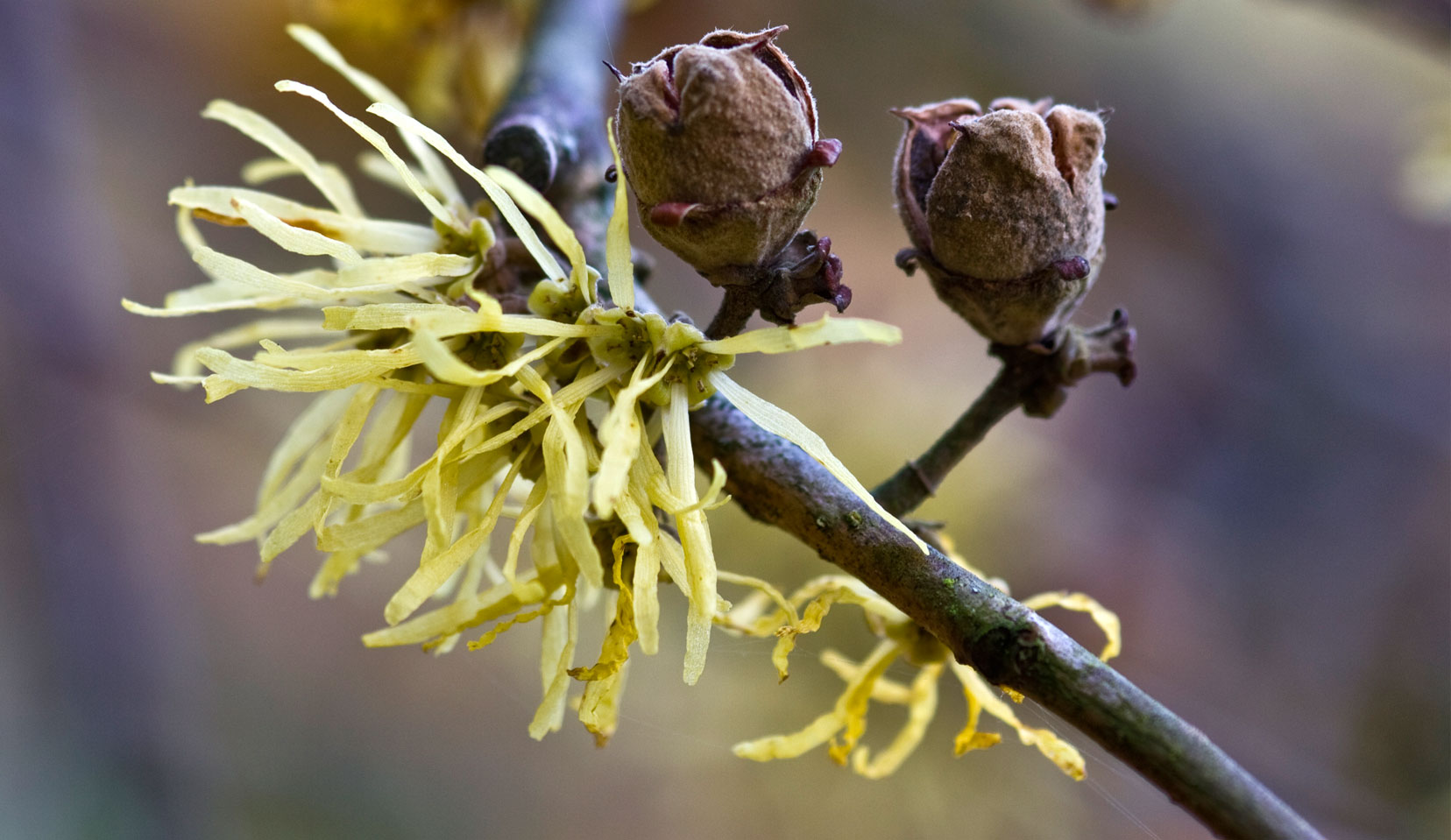The scientific name, on the other hand, is not such a mystery. Hamamelis means “together” referring to the unusual state of the mature fruit from the previous season and the flowers of the current season occurring on the plant at the same time.

Witch-hazel (Hamamelis virginiana) is an amazing native Wisconsin shrub, although some consider it a small tree since it can grow between 5 and 15 feet tall. It is alternately branched with smooth gray bark and wavy toothed obovate leaves on relatively short petioles. Witch-hazel is unique in that the fruit from the previous season matures at the same time as its slender yellow flowers emerge in the fall while the leaves are falling. It is one of the very few plants in Wisconsin to begin blooming in the late fall as leaves are dropping. The fruit, or nutlets, ripen the following summer. Witch-hazel grows in moderate to moist woods throughout the eastern half of the United States and Canada. The seeds explode out of the fruit when mature and the branches have naked buds, with no overlapping bud scales.
Various portions of the shrub have been used for medicinal purposes from early Native Americans up to modern day commercial uses. A leaf tea has been ingested to treat colds, sore throats and lung ailments. An astringent made from the leaves and inner bark is used for itching (including treating poison ivy), suppressing menstrual bleeding, for hemorrhoids, eye ailments, bruises, sore muscles, and as skin toner. Commercial production of Dickson’s Witch-hazel, as a skin toner, began in the mid-1880s and it is still sold worldwide!
Witch-hazel is listed on medical websites as useful for: astringent for skin for acne, itching, pain, swelling, eye inflammation, varicose veins, bruises, insect bites, hemorrhoids and other skin irritations. It is also taken by mouth for diarrhea, mucus colitis, vomiting blood, tuberculosis, colds, fevers, tumors and cancer (source: webMD).
Along with having so many amazing uses for humans, witch-hazel also serves as a larval host plant and nectar source for several insects and Lepidoptera (butterflies) and as a nesting site for several bird species. Turkey, grouse and squirrel feed on the dispersed seeds.
Whatever the origins of witch-hazel's uncommon name, this shrub with the exploding seeds serves some common needs for both people and animals alike.





